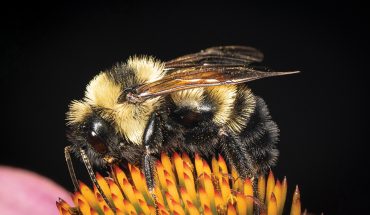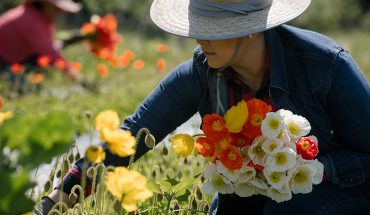by Tony Avent
illustration by Ippy Patterson
In my travels through much of the northeastern United States, I have always been struck by the amazing masses of ostrich fern happily congregated in low wetlands.
I was determined to grow this fern – which is native from Canada southward to Northern Virginia – here in the southeast. Even though it despises the heat, I did manage to keep it alive. But I failed to manage much more than a sparse, imperfectly developed specimen (what we call depauperate in plant circles); a one-foot tall version of what would have been a three-foot to four-foot regal specimen in the north.
Then I heard of a selection of ostrich fern called Matteuccia struthiopteris that reportedly grew well in the South. But it wasn’t until the mid-2000s that I finally was able to acquire it under the name Matteuccia “The King.” As promised, it was amazing in our garden, quickly colonizing a patch of ground, spreading by underground runners, and even growing in less-than-ideal, evenly moist soil under a couple of magnolias.
If you really want to see ostrich fern take off, plant it in a partially sunny site with soil that stays moist – and stand back. Did I mention that it’s also deer-resistant?
Ostrich fern isn’t a fern for all gardens, since it can be aggressive in its spreading nature, but when planted in an appropriate site, it’s quite extraordinary. The deciduous fronds emerge in mid-spring in what is truly a photographic moment – assuming you don’t first eat the young emerging fiddleheads, as often happens in both fine dining establishments in Japan and in pockets of the Northern United States.
Ostrich fern has what are known as dimorphic fronds, or fern leaves. Dimorphic is a fancy way of saying the fern has different male and female fronds. While most ferns have a single uniform leaf type with the female spores hidden on the leaf back, Ostrich ferns have three-foot-tall, wing-like male leaves that look completely different from its 18-inch tall, fertile female fronds.
One of my favorite landscape features of ostrich fern are these female fronds, which turn brown but remain rigidly upright through the entire winter, even after the male deciduous fronds have long gone dormant. They create a dramatic winter garden effect, and in spring, the fertile fronds release the developing dust-like spores, or fern seed, that they’ve held tightly all winter.
Gardeners in the United Kingdom like ostrich fern so much that they gave it their prestigious Royal Horticultural Society Award of Garden Merit. Shouldn’t we at least give it a place in our own gardens?




